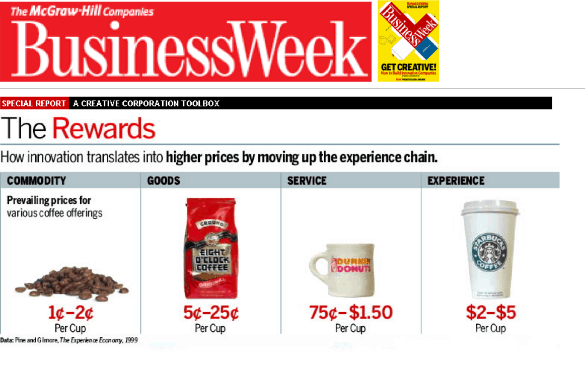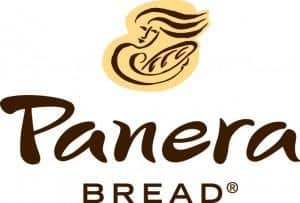Our coffee version of the Progression of Economic Value is now well known. We like this old Business Week depiction, for example:

We’ve often spoken of the Anti-Café trend in Europe (Google it), where coffee shops explicitly charge for the coffee-drinking time and subsume the coffee itself in the hourly (or sometimes per minute) rate. That’s innovative, and it’s now a growing trend.
Multiple Ways of Charging Admission
From the outset of our musings on the Experience Economy, we’ve advocated charging admission for experiences, asking this provocative question:
What would you do differently if you charged admission?
At a minimum, the question can lead to ideas that would not otherwise arise if one assumes no fee is to be charged. You have to come up with ideas worthy of charging admission.
Of course, charging for time spent per visit is but one way to charge admission (we outline six admission fee options in Chapter 3 of The Experience Economy).
Another would be to charge a monthly fee, akin to a Netflix subscription, for all coffee a customer wants. After all, the commodity green coffee only costs 5 cents per cup! I’ve joked that I’d allow such a coffee-membership café to switch to decaf, without telling me, after so many cups. (See transparent customization in Chapter 5!)
Charging Admission Can Mean Charging for Time
Well, check this out, Panera is now offering an unlimited coffee subscription for $8.99 per month.

Friends, this offering effectively functions as an admission fee.
As the Experience Economy advances, we’ll surely see more and more services opt for this pricing option. It’s already happening with car washes, for example. Why not haircuts? Or manicures? Golf lessons? Or ax-throwing?
We’ve also advanced the notion of pseudo-admission fees, or customers paying in non-monetary ways or via indirect monetary means. An example of the former would be the hours people drive to get to a remote Bass Pro Shop; an example of the latter would be paying to park atop the steep hill at Universal City Walk.

Now news comes that Ikea in Dubai is going to let customers make payment for purchases — at least in part — by crediting the drive time it take for various customers to trek to a not-so-nearby Ikea store.
See: IKEA Becomes First Retailer To Let Customers Pay Using Time
Time is indeed the currency of experiences! (Next, credit for the time it takes to assemble the furniture?)
Marching Orders for Businesses
So let us offer this advice for any enterprise considering experimenting with this option:
If your customers tend to buy on a daily basis, charge a flat fee per month; if your customers tend to buy on a monthly basis, charge per year.
For customers buying on a sporadic basis or an unpredictable frequency, consider charging an initiation fee, access fee, or membership fee – at least for some premium version of your core offerings.



